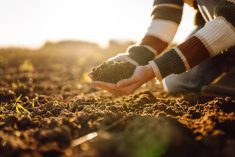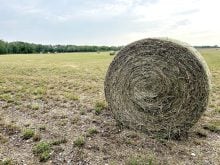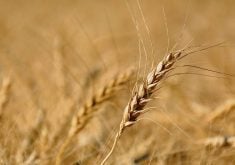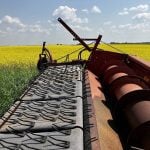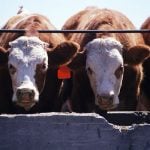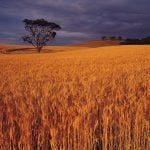Forage quality is much lower this year, compared to the 10-year average. Results indicate that energy and protein content is reduced due to hay being cut too late resulting in overmature hay, or from being rained on and raked or turned numerous times. On average, forage energy and protein content is down 10 to 15 per cent compared to normal.
“The loss in quality is also present in alfalfa or mixed alfalfa – grass hay. Protein levels are also down; instead of being 14 to 15 per cent, sample tests are coming back at eight to 10 per cent,” says Barry Yaremcio, beef forage specialist with Alberta Agriculture and Rural Development. “Producers need to understand what these lower-quality results mean, and understand the deficits and make appropriate decisions when it comes to feeding cattle this winter.”
Read Also
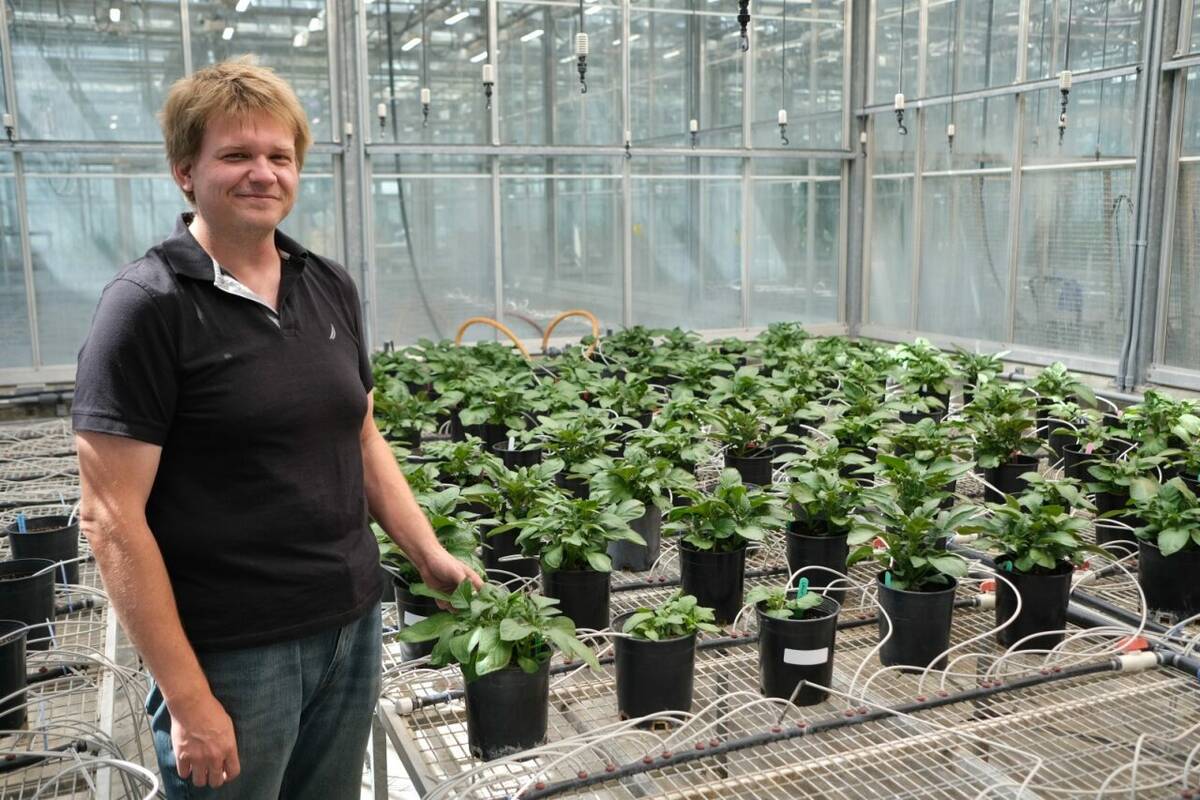
Hail research hopes to benefit potato growers
Alberta research scientist measures hail storm and heat dome affects on potato crops
Tests are revealing that rained-on hay is showing acid detergent fibre (ADF) levels in the 40 to 45 per cent range or higher. This is about a third higher than in an average year. With higher fibre levels, energy levels in forage are down by 20 to 30 per cent. Instead of hay having 62 to 65 per cent total digestible nutrients (TDN), or energy content, they are returning with energy levels in the 50 to 55 per cent range. When comparing this year’s hay to straw, which is typically 45 per cent energy, this year’s energy content in the hay is hovering halfway between average-quality straw and the good-quality hay that producers were feeding last year.
Adjust rations
“Producers will have to be careful when feeding animals this year,” says Yaremcio. “Producers will have to adjust rations to follow the general rules of providing cows with seven per cent protein on a dry basis when cows are in mid-pregnancy, nine per cent in late pregnancy and 11 per cent after calving. Pregnant cows need to have enough protein to be able to consume feed and digest it at the proper rate.”
On the energy side, it is usual that cows require 55 per cent TDN in mid-pregnancy, 60 per cent during late pregnancy and 65 per cent after calving. Depending on what feed test results show, free-choice feeding hay in a feeder may not provide sufficient energy (TDN). Producers may need to supplement pregnant cows with three to five pounds of grain during mid-and late pregnancy and up to eight and nine pounds after calving to meet required energy levels. The only way to be sure is to test feed and have a balanced ration developed.
“When protein levels in feed are low, rumen bacteria numbers decline and digestion rates go down, meaning that the cows can consume less feed, which results in further reductions in digestion and even lower consumption,” says Yaremcio. “This vicious circle will eventually get to a point where cows are impacted and can’t eat at all.”
Weight loss
Lower energy in the ration, at 52 per cent TDN instead of 55 per cent, will result in the cows losing weight at approximately one-quarter to one-half of a pound per day. As it gets colder, weight loss will increase.
“When energy is low in a ration, grain supplementation is essential,” says Yaremcio. “As it draws closer to calving time, energy requirements go up and even more weight could be lost each day if grain is not provided.”
Test results from this year are also showing that weathered or overmature forages contain higher-than-usual fibre levels. When neutral-detergent fibre levels exceed 55 per cent in the ration, voluntary feed intake will be reduced. It will appear that the cows are full (with large rumens), daily feed intake can be restricted by five to six pounds compared to feeding hay from previous years. Cows will be short of nutrients and will require supplementation of grain and protein sources. If cows are not supplemented, there will be weight loss as they will not be able to eat anywhere near what they need. This situation can result in cows losing up to two and three pounds per day. Weight loss prior to calving reduces reproductive performance during the next breeding season.
“It’s not going to be enough, this year, to watch for ‘content’ cows,” cautions Yaremcio. “Producers should condition-score some of the cows on a monthly basis to determine if they are losing weight and condition. Before physical symptoms are obvious, cows could be losing weight and be in nutritional distress. Trying to get cows to gain weight in late pregnancy during cold weather is very difficult.”
———
“It’s not going to be enough, this year, to watch for ‘content’ cows.”
BARRY YAREMCIO
AARD



